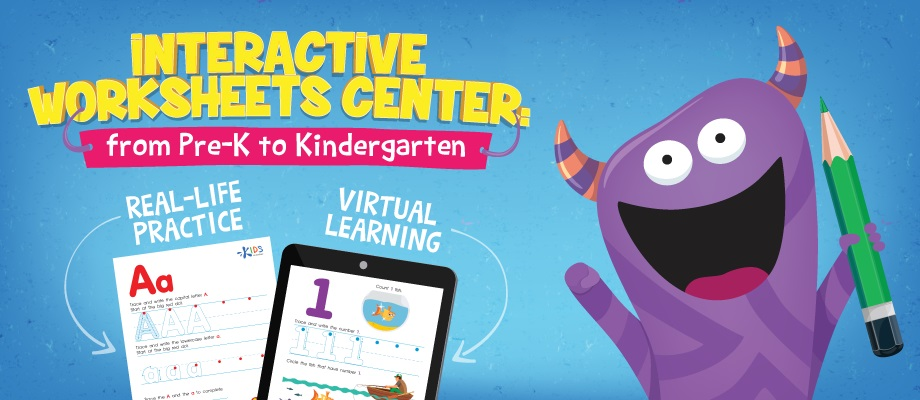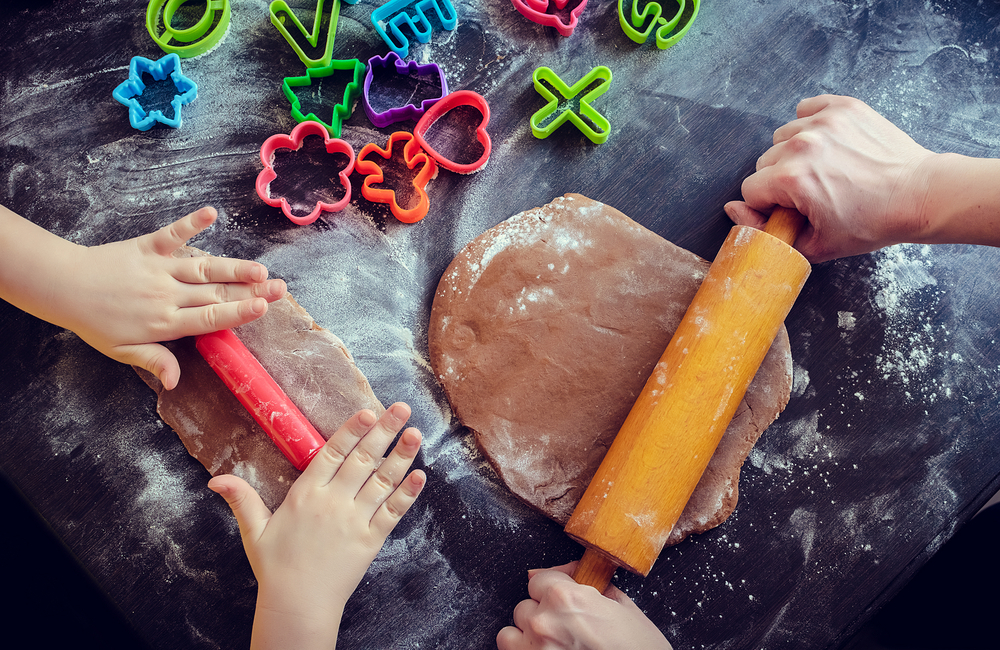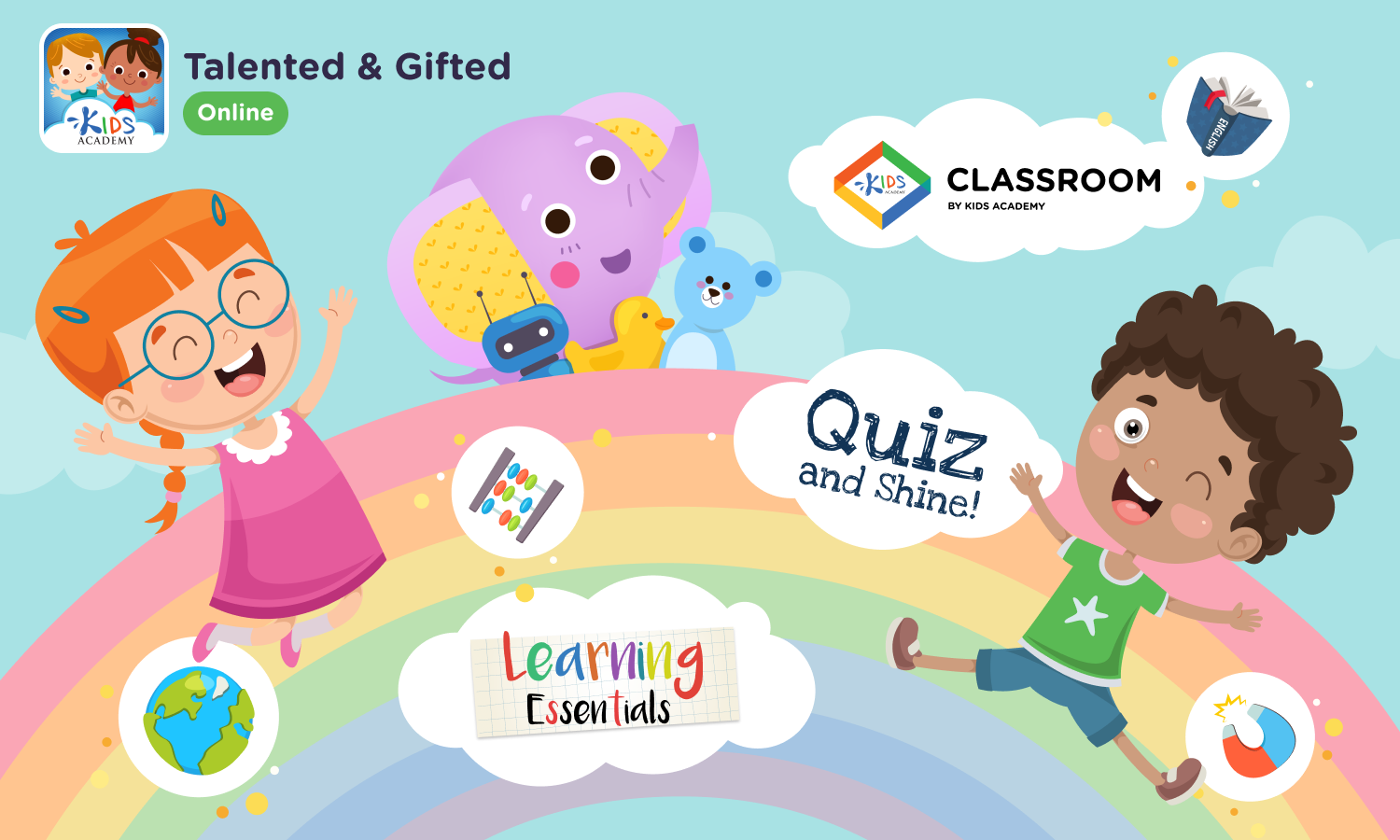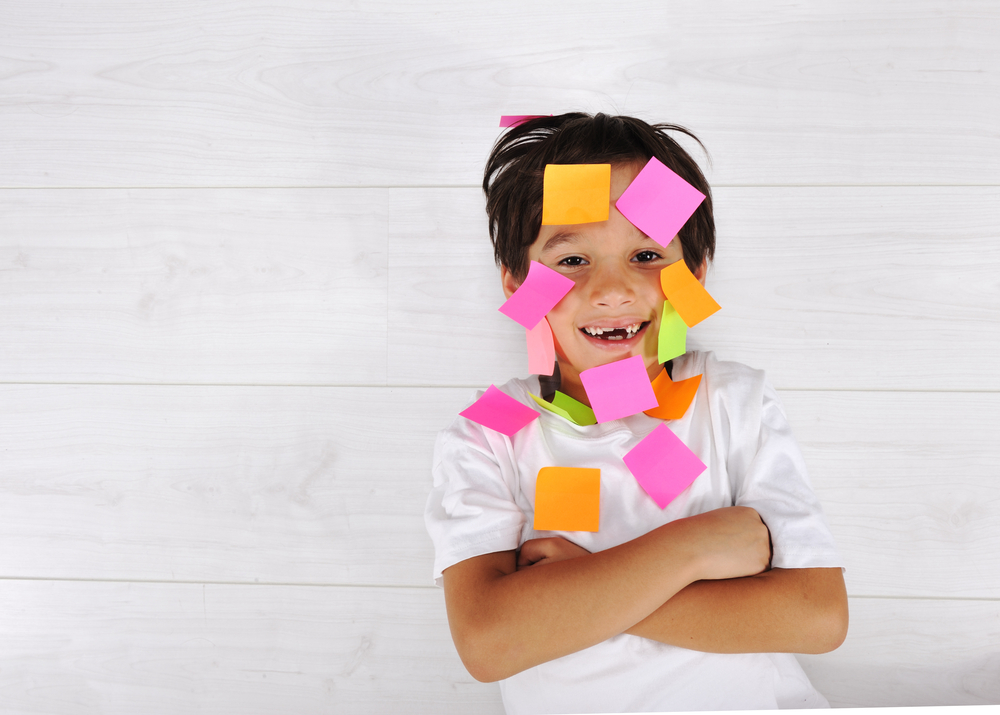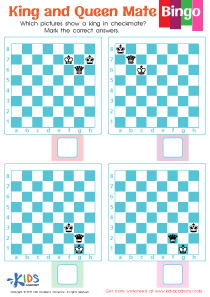Strategic thinking development Normal Chess Worksheets for 6-Year-Olds
7 filtered results
-
From - To
Enhance your child's strategic thinking skills with our engaging Normal Chess Worksheets designed specifically for 6-year-olds. These thoughtfully crafted worksheets introduce young learners to the fundamentals of chess while fostering critical problem-solving abilities. Through fun and interactive activities, children will explore tactics and learn to anticipate their opponents’ moves. Perfect for family learning or classroom settings, our resources make discovering chess both enjoyable and educational. Watch your little ones develop focus, patience, and strategic insight as they embark on their chess journey. Download now and start cultivating the essential skills for future success in chess and beyond!
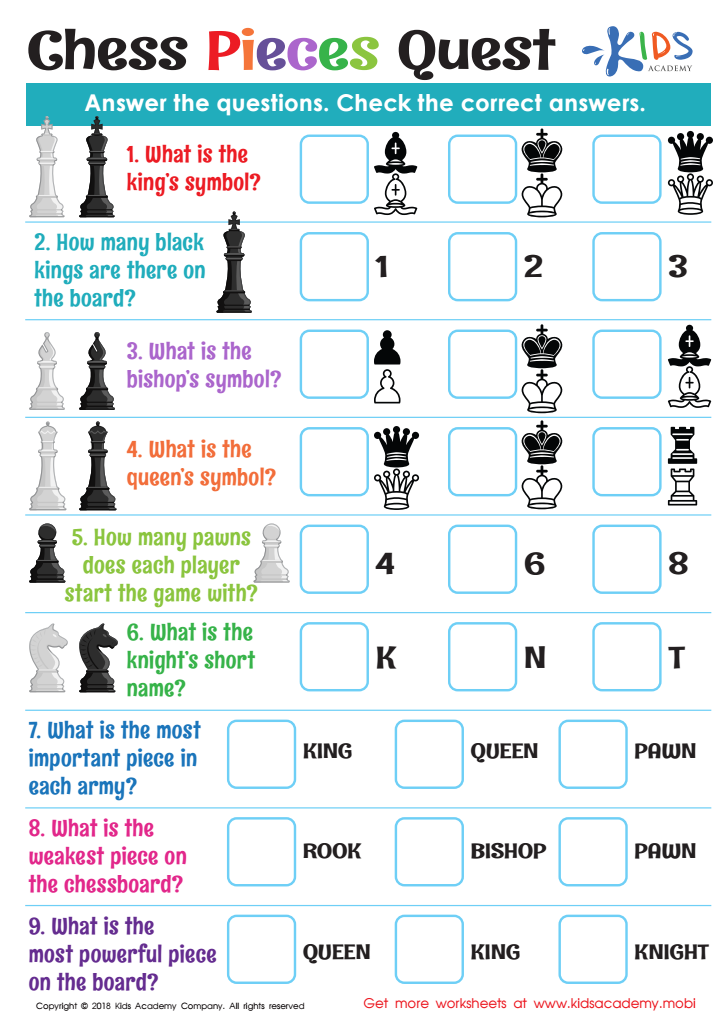

Chess Pieces Quest Worksheet


Notation of Moves Writing it Down Worksheet
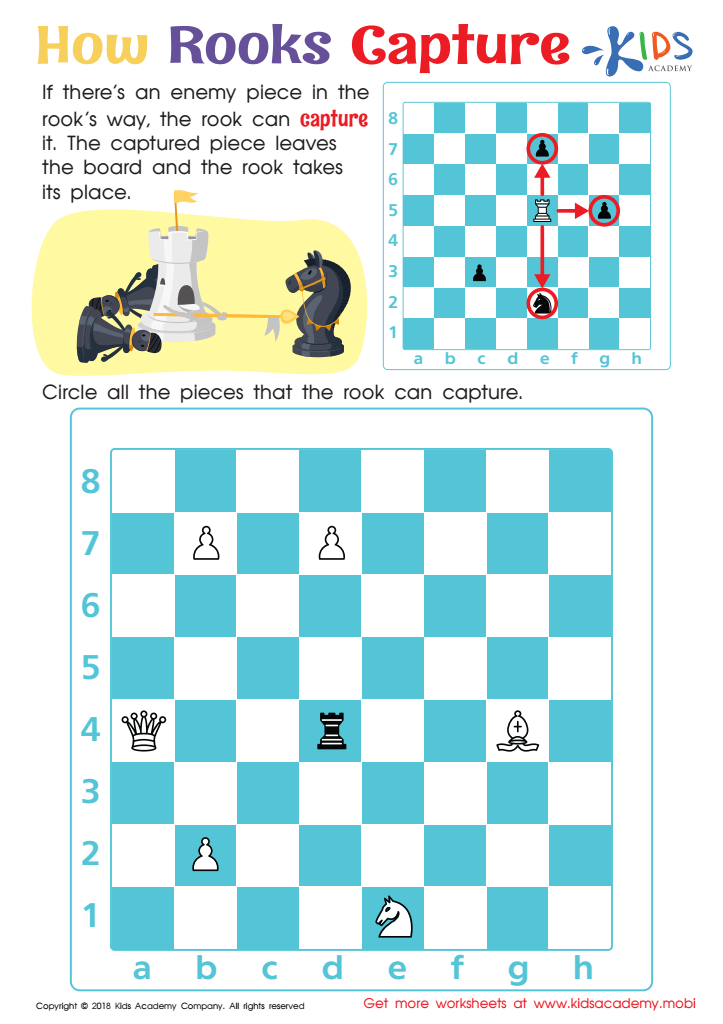

How Rooks Capture Worksheet
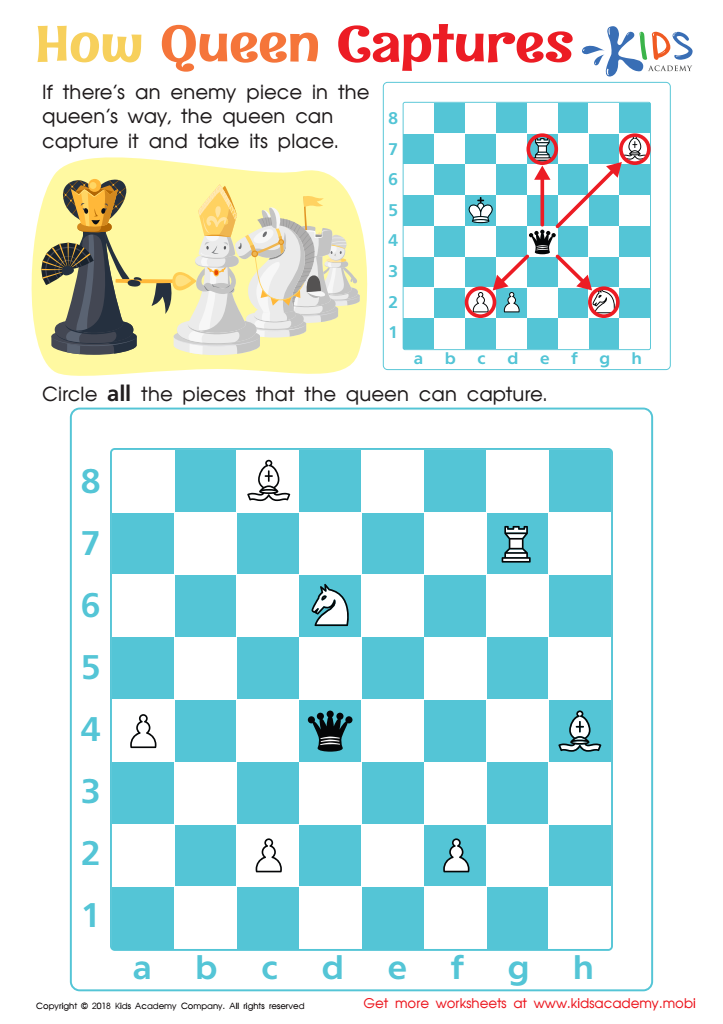

How Queen Captures Worksheet
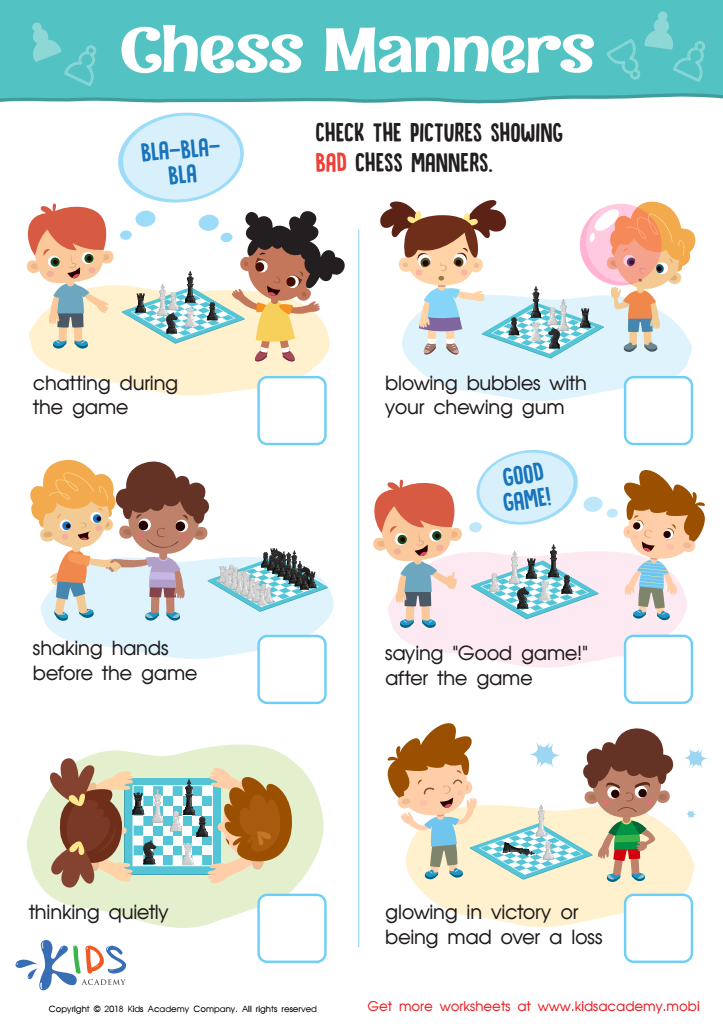

Chess Manners Worksheet
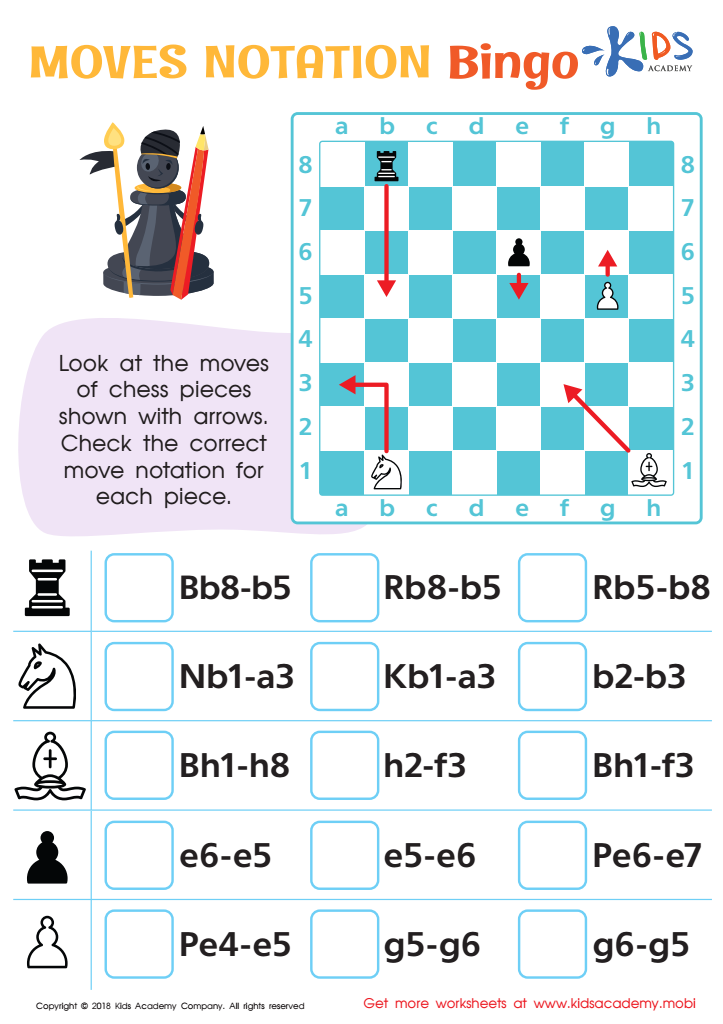

Moves Notation Bingo Worksheet
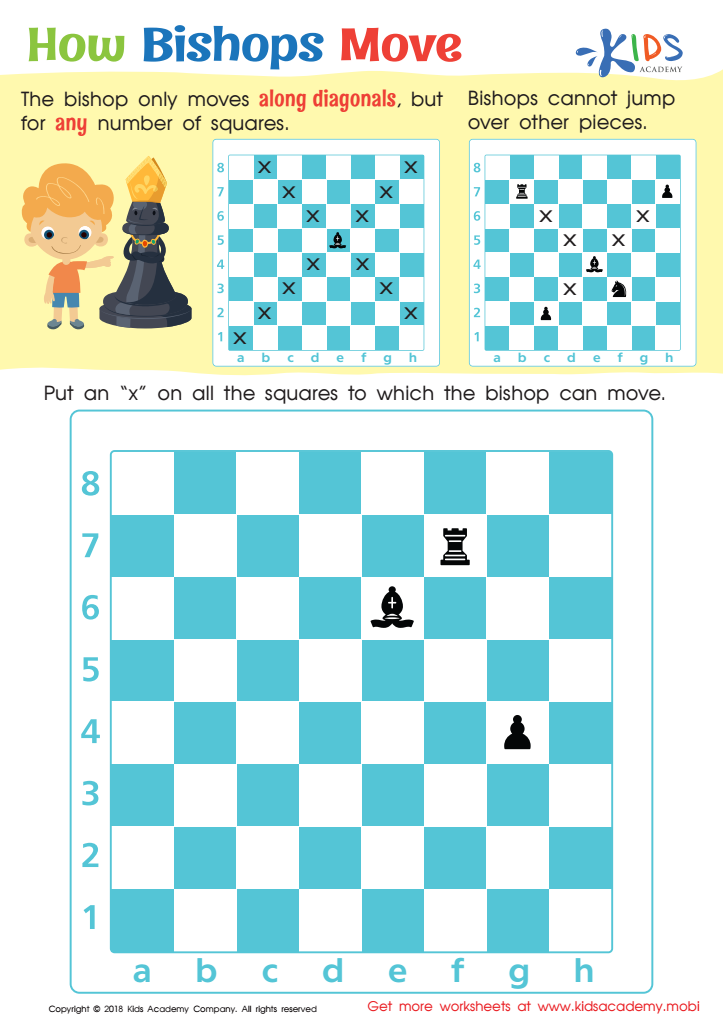

How Bishops Move Worksheet
Parents and teachers should care about developing strategic thinking skills in 6-year-olds through activities like chess for several compelling reasons.
Firstly, chess is a powerful tool for enhancing cognitive abilities. It encourages critical thinking, problem-solving, and decision-making skills, which are essential for academic success. When children learn to anticipate consequences, they begin to apply this strategic thinking across various subjects, from math to reading comprehension.
Secondly, playing chess fosters patience and emotional resilience. Kids learn that every move counts, experience setbacks, and learn from mistakes—valuable life skills that promote perseverance and a growth mindset. The social interaction involved in chess also helps develop communication and collaboration skills as children engage with peers and adults.
Moreover, integrating chess into educational activities can make learning engaging and fun, keeping students motivated and attentive. Finally, encouraging extracurricular games like chess may lead to increased self-confidence as children achieve their goals and improve their abilities.
In summary, strategic thinking development through chess offers numerous benefits for young learners, laying a foundation for future academic and personal growth while creating enjoyable and enriching experiences in early education.

 Assign to My Students
Assign to My Students




